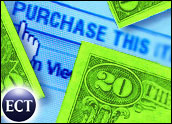
OK, I get it. I went to the Sales 2.0 conference in San Francisco last week and there was a lot to like about it.
In my career, I have seen some major back and forth changes in selling, and I have to say that these changes relate more to what is being offered than who we are selling to.
Every salesperson knows (or ought to) that there are times when you make appointments to take orders and there are other times when you work very hard for small results. When you are taking orders, hard work is almost irrelevant, and many neophyte salespeople have made small fortunes selling whatever the market had an insatiable appetite for at the right moment. At other times, you can work like a dog and seem to lose on a technicality.
Deja Vu
The whole Sales 2.0 proceeding and its content reminded me of the period from about 1989 to 1995. Back in the last century, that was the time when the mini-computer market fizzled out but the client server market had not yet ignited enough to sustain significant growth in the tech sector. All that ended in 1995 when Windows 95 was released.
During the ’89 to ’95 stretch, sales junkies talked a lot about methodologies and about the changing sales environment. We got strong doses of “strategic selling” and “solution selling” so that we could convert from order takers to consultative selling machines. It worked too, sort of, but I have to say life got better after ’95 when we could all go back to taking orders for things like ERP (enterprise resource planning) and CRM — the monster client-server applications of the day.
What happened at the end of the mini-computer boom was that there was nothing much that was new to sell or buy: Customers sat on their wallets; we had a recession; and we tried very hard to sell into a buyers market.
Missing Integration
I think we’re at a similar point today. As I have said before, there are lots of very similar products on the market fielded by competent companies, and the result is that we work hard and look for small advantages. People — buyers — haven’t changed much, if at all — it’s just human nature. What has changed is that the last time this happened we were all still using spreadsheets to track customers and deals, but today we have SFA (sales force automation) and CRM.
So, it was not very surprising to hear from keynote speakers like Geoffrey Moore, whose best selling “Crossing the Chasm” came out in 1991, or Michael Bosworth, whose Solution Selling methodology was in high demand back then. What has changed — and what I think Sales 2.0 is at least partly about — is that we now have automation to support some very good ideas about selling in buyers markets.
Where I have a small difference with the whole Sales 2.0 trend is that it so far lacks a discussion about the end-to-end sales process. There were a lot of small vendors selling point solution products at the conference and most of them are pretty good applications, too. Unfortunately, none of these vendors have taken it upon themselves to band together to produce an integrated offering that might appeal to one or more vertical markets.
No Vendor is Perfect
In my view, it would be smart for these vendors in loose associations to state explicitly that their combinations work well in an integrated process for XYZ vertical market and complement products from vendors A, B and C. That would take a lot of confusion out of the buying process. In contrast, imagine what a buyer in say, financial services, thinks when walking into a room full of vendors all claiming to solve his or her business problems.
I know many vendors would not want to put themselves into a situation where they explicitly say what situations they are good at because it implies that they might not be right elsewhere. However, the evidence is pretty clear that over a long period of time and different economic environments, the vendors that say “no” once in a while are the ones that succeed. That’s especially true for emerging vendors, too.
So, my take away from the conference is that it was pretty good — more than 400 people attended and the organizers plan to make this a regular thing. If I was scoring this I might say Sales 2.0 absolutely, human beings (buyers) get a 1.0 because they haven’t changed at all and the vendors are still coming up to bat. They haven’t changed and that’s where we need to see some movement both to embrace the many new technologies and to bring better focus to their applicability.
Denis Pombriant is the managing principal of the Beagle Research Group, a CRM market research firm and consultancy. Pombriant’s research concentrates on evolving product ideas and emerging companies in the sales, marketing and call center disciplines. His research is freely distributed through a blog and Web site. He is working on a book and can be reached at [email protected].






















































